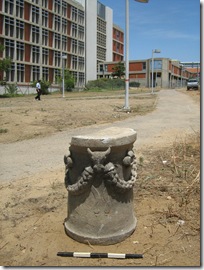Hobby Lobby adds rare Bible to its collection of Biblical books and manuscripts Company assisting National Bible Museum with site selection and development plans OKLAHOMA CITY – Hobby Lobby Stores Inc., a privately held retail chain of more than 435 arts and crafts stores, has acquired one of the earliest-known near-complete Bibles in the world. The so-called Codex Climaci Rescriptus includes the only surviving New Testament texts in Jesus’ household language, Palestinian Aramaic. The company made the acquisition from Westminster College at Cambridge University for an undisclosed amount. Hobby Lobby also recently purchased the earliest known scripture in English, dated 1341, Richard Rolle’s translation and commentary on the Book of Psalms, which predates Wycliffe’s translation by nearly half a century. Hobby Lobby is collecting a vast array of ancient antiquities, biblical papyri, Hebrew scrolls and Judaica, important medieval manuscripts and a comprehensive assortment of Bibles and rare books. Their collection includes many of the earliest printed Bibles, the most significant Protestant and non-Protestant Bibles and editions of the Jewish Tanach or Hebrew Bible, a full range of English, American, and missionary Bibles and other unique historical records. As part of its efforts to preserve biblical history, Hobby Lobby is assisting the National Bible Museum, a nonprofit organization co-founded by Scott Carroll, Ph.D., executive director; D. Jonathan Shipman, chief executive officer; and Daniel Centurione, who are developing a non-sectarian museum to house collections of historical biblical significance. “We are committed to preserving the history of our faith and excited about the opportunity to share our collection with others through the development of the National Bible Museum,” said Steve Green, president of Hobby Lobby. “Our family has participated in ministry efforts worldwide and has had the opportunity to visit places and see things that are of great historical and Biblical significance. We feel it is important to give others the opportunity to experience Biblical history without traveling around the world, and the museum will bring this history together in one location.” Currently, leaders of Hobby Lobby and the National Bible Museum are evaluating sites for the museum. “Our goal is to acquire a site in a major metropolitan area that will allow visitors from around the world to enjoy the collections housed in the museum and participate in special educational programs,” Green said. “We are looking for at least 300,000 square feet of space and ample parking and have been evaluating various opportunities, including several in the Dallas area.” Carroll, Shipman and Centurione have been working on the project for several years and have recently been assisting Hobby Lobby in building its collection. “After several years of planning, we expect to bring the National Bible Museum to fruition, thanks to the generous support of Hobby Lobby and the Green family, along with others who have pledged their support,” said Carroll, who is a specialist on the history of the Bible and ancient biblical manuscripts. “Our mission is twofold. First, we want to tell the story of the composition, transmission and preservation of the most popular, the most prohibited and the most influential book in history in an engaging and lively way that will impact and inspire people of all ages and faiths. Second, we want to provide a resource for advanced academic studies, with educational programs for public schools, universities and seminaries.” About Hobby Lobby Stores, Inc. Based in Oklahoma City, Hobby Lobby and its affiliates, including Mardel, Hemispheres and Crafts, Etc!, employ more than 18,000 individuals nationwide. Hobby Lobby was founded by David Green in 1972. The company has grown from one 700 square-foot store to more than 435 locations in 35 states. Hobby Lobby carries no long-term debt, is open only 66 hours per week and is closed on Sundays. For more information, visit www.hobbylobby.com.
